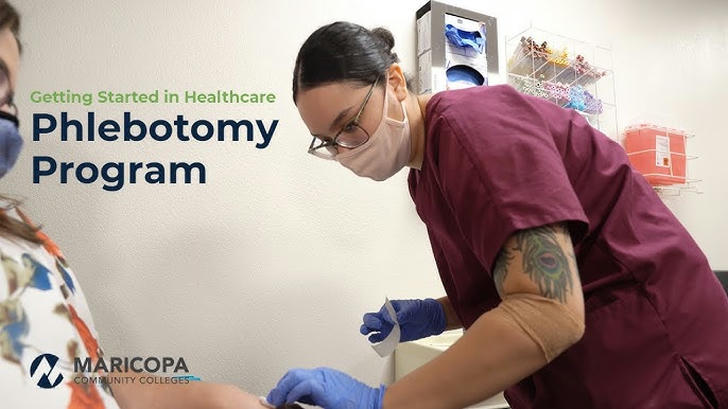Fast routes into phlebotomy — paid training, government-backed courses, 4-week starts and how to apply
Phlebotomy provides a quick, hands-on path to a healthcare career, with opportunities to earn while you learn. This clear guide outlines training options, certifications, and how to apply to start your journey.

Why phlebotomy is a good quick path
Phlebotomists draw blood for labs, transfusions and diagnostics — work every hospital, clinic and lab needs. Training is short compared with many allied-health careers, entry barriers are low, and many employers hire graduates of certificate programs or provide on-the-job training. That makes phlebotomy a common pick for people who want fast, practical credentialing and steady entry-level pay.
Government-backed and paid training routes
1) WIOA / American Job Center (most widely available)
What it is: The Workforce Innovation and Opportunity Act funds training for eligible adults (dislocated workers, low-income individuals, veterans in some cases) through local American Job Centers.
How it helps: If approved, an Individual Training Account (ITA) can pay for a community college or approved vendor’s phlebotomy course — sometimes covering exam vouchers, materials or a small stipend.
Typical format & length: Many WIOA-approved phlebotomy tracks are 4–12 weeks (intensive), combining online theory and scheduled lab/clinical hours.
How to apply: Visit your local American Job Center (CareerOneStop) and ask about WIOA eligibility and the list of approved phlebotomy providers.
2) Registered apprenticeships / employer-sponsored hire-then-train
What it is: Some hospitals, labs and staffing agencies hire entry workers and provide on-the-job phlebotomy training (paid) plus classroom time. Some employers offer a wage of $25 per hour for apprentices during the training period.These are not yet as common as in trades but exist in many metro areas.
How it helps: You get paid while you complete required draws and a clinical checklist, and often the employer supports certification exam fees.
Length: From a few months to a year, depending on the sponsor’s plan.
3) Job Corps (ages 16–24)
What it is: A federally funded residential program for young adults; some centers include allied-health tracks that teach phlebotomy skills and place graduates with employers.
How it helps: Training + placement supports targeted at younger candidates.
4) Veterans’ education & workforce channels
What it is: GI Bill benefits and veteran workforce programs can cover approved phlebotomy training or help with tuition/expenses; Helmets-to-Hardhats-style connections sometimes place veterans into health industry apprenticeships.
How it helps: Veterans can use education benefits toward eligible programs and access career counselors.
5) Community college workforce grants & state-funded cohorts
Many community colleges run short phlebotomy certificate programs and periodically participate in state workforce grants that subsidize cohorts or include placement partnerships with hospitals. These programs often appear on WIOA provider lists.
Course formats, hours and certification
🔸4-week phlebotomy programs: These intensive courses typically combine online didactic lessons with scheduled lab sessions and a short clinical practicum. Typical total hours: 40–120 hours (varies widely). Useful to gain basic skills quickly, but ensure the program documents the required hands-on draws.
🔸Standard certificate programs: Often 8–12 weeks with more clinical rotations and higher minimums for successful venipunctures and capillary sticks.
🔸Clinical requirements for certification: Many certifying bodies or employers expect a range of successful collections — commonly 30–100 successful venipunctures (plus capillary sticks) logged during training/externship. Exact numbers vary by credentialing organization.
🔸Common certifications:
🔹NHA — Certified Phlebotomy Technician (CPT) (widely accepted; training + exam)
🔹ASCP — Phlebotomy Technician (PBT) (recognized by many facilities)
🔹AMT — Registered Phlebotomy Technician (RPT) or similar credentials from other bodies
Employers may accept program completion alone for entry work, but certification strengthens hiring chances and pay.
Costs & pay
🔸Tuition ranges: Short phlebotomy certificates can range approximately from $500 to $2,500 depending on provider, lab fees and externship costs. (Prices vary by region and provider.)
🔸Paid training wages: Apprenticeship or employer-sponsored trainees may earn wages during training — amounts depend on employer and region. Some employers offer a wage of $25 per hour for apprentices during the training period.
🔸Post-training pay: Entry phlebotomists’ pay varies by market, but many start in the low-to-mid hourly wage band with growth after certification and experience.
How to apply — step-by-step
1.Decide your goal: fast entry (4-week intro), certification prep (8–12 weeks), or earn-while-you-learn apprenticeship.
2.Call your local American Job Center and ask about WIOA ITAs for phlebotomy — they’ll tell you eligibility and approved providers.
3.Search Apprenticeship.gov and local hospital career pages for “phlebotomy trainee” or “clinical apprentice” roles.
4.Check Job Corps if age-eligible, or VA education office if you’re a veteran.
5.Pick a program that includes hands-on draws and an externship — ask how many successful venipunctures are logged and whether exam prep/vouchers are offered.
6.Prepare documents: ID, HS diploma/GED, immunization records (Tdap, MMR, Hep B often required), TB test, background check and sometimes drug screening. Employers will require these before clinicals.
Quick wrap & next step
Phlebotomy is a fast, practical healthcare entry that genuinely supports quick hires — and government routes (WIOA, Job Corps, veteran benefits, employer apprenticeships) can help people get paid or supported while training.
